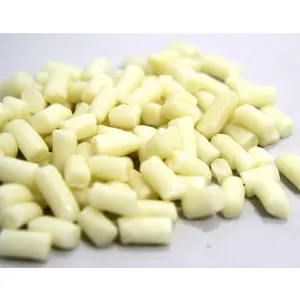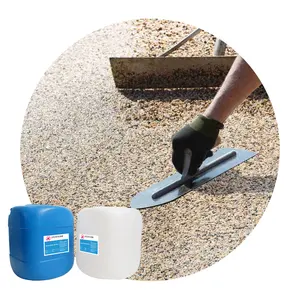Popular in your industry





































































Top categories
About grey house paint
Introduction
Choosing the perfect shade of grey for your house can be a daunting task. With its rich history and psychological implications, grey is a color that can evoke a range of emotions and responses. From the lightest hues to the darkest tones, each shade of grey carries its unique character. This comprehensive guide will help you understand the color grey, its variations, and how to choose the right shade for your home. We'll delve into the psychology of grey, explore its different shades, and provide tips on how to pair it with other colors. We'll also discuss the importance of considering your home's architecture, style, and lighting conditions when choosing the perfect shade of grey.
Understanding the Color Grey
Grey, spelled 'gray' in American English, is an intermediate color between black and white. It's a neutral or achromatic color, literally meaning 'without color', as it can be composed of black and white. Grey is often associated with neutrality, conformity, and modesty. The color grey has a rich history, being the color of undyed wool worn by peasants in the Middle Ages, and later becoming a fashionable color in the 18th century. Understanding the nature and history of grey can help in choosing the perfect shade of grey house paint.
The Psychology of Grey
Grey is an unresponsive color, often seen as neutral, impartial, and indecisive. It's the color of compromise, being neither black nor white. As grey darkens, it becomes dramatic and mysterious, while as it lightens, it becomes more illuminating and lively. Grey is associated with maturity and responsibility, often linked to the grey hair of old age. It's seen as modest, dull, and sometimes depressing, yet also elegant and formal. From a psychological perspective, those who favor grey may be trying to protect themselves from the chaotic world, preferring a safe, balanced existence, and often controlling their emotions to avoid pain.
Variations of Grey
Grey paint comes in a variety of shades, each with its unique character. For instance, there are warm shades of light greige, cooler greiges, mid-tone cool grays with a slight blue undertone, mid-tone grays that lean towards red, warm grays, mid-tone greiges, light warm grays, and warm greiges. Some greys have a blue-green vibe, and others are cool neutral grays.
Choosing the Right Shade of Grey
Choosing the right shade of grey for your home involves careful consideration. Start by selecting a variety of grey paint swatches and observing them in the room you plan to paint under different lighting conditions. Don't view the colors in isolation, compare them to other items in the room to avoid undertone mismatches. Also, consider the existing finishes in the room. For instance, a cooler grey paint can modernize a house with lots of yellow or red-ish wood tones. After narrowing down your choices, buy small paint samples and create sample boards. Be patient and don't settle until you find the perfect shade.
Consider Your Home's Architecture and Style
When choosing the perfect shade of grey for your home, it's crucial to consider your home's architecture and style. For instance, a light grey can flatter simple colonial architectural styles, while dark grey can bring stability and strength to modern designs. Texture can also play a significant role, with different siding styles like shake, lap, and board and batten creating intrigue. Even unconventional choices, like matching the roof with the siding, can look fantastic when done right. Remember, the right shade of grey can elevate your home's exterior and make it look more stately and sophisticated.
Evaluate Lighting and Surroundings
When choosing the perfect shade of grey for your house, it's crucial to evaluate the lighting and surroundings. The color temperature of your light bulbs can significantly affect how the paint appears on your walls. For instance, a bulb's Kelvin temperature can either enhance or distort the color. Moreover, a lighting source's rating on the Color Rendering Index also plays a key role. It determines how accurately the light source can reveal the color of objects. Therefore, using artificial light effectively can enhance your chosen paint color, making your grey walls look more appealing.
Pairing Grey with Other Colors
Pairing grey with other colors can create a balanced and vibrant palette. Lighter shades of grey can create a calming atmosphere when combined with earth tones like beige. Darker greys, like charcoal, can be paired with bold colors like electric blue or gold for a modern feel. Grey can also be used as an accent color, paired with energetic colors like lime or orange soda. The cool tones of grey can create a polished look when combined with fiery colors like cherry red. A calming shade of grey can blend with a springy yellow for a cheerful living room.
Complementary Colors
Grey is a versatile color that pairs well with a variety of hues. For a calming interior, consider pairing grey with blue, especially dark blue. A lively, upbeat, and modern look can be achieved by combining bright yellow with dark grey. A bold red sofa against a light grey wall creates a light and breezy interior. Grey and black together create a deep, moody interior. A barely-there grey with a crisp white results in a bright and airy space. For a soothing and on-trend look, consider grey and pink. Grey also pairs well with sage green, creating a serene, neutral scheme.
Creating Contrast
Creating a striking contrast in your home can be achieved by pairing grey with other colors. For instance, a passionate combination of red and grey can evoke energy and drama, while mustard yellow and grey can create a moody and atmospheric space. Green and grey bring the freshness of nature into your home, and teal blue and grey offer a calm and relaxing ambiance. Romantic blush pink and grey are perfect for bedroom schemes, and the graceful combination of blue and grey feels light and airy. These combinations can help you create a visually appealing contrast in your home.
Grey Paint Finishes
When choosing grey paint finishes, consider the quality of the paint. High-quality paints provide enhanced durability and washability, ensuring your grey paint finish withstands everyday living. A high-quality paint finish can add value to your home, offering a wall finish that is not only aesthetically pleasing but also durable and long-lasting.
Matte vs. Glossy
When choosing a grey house paint, the finish is crucial. Matte and glossy finishes offer different aesthetics and practical benefits. Matte paint, with its non-reflective nature, is excellent for hiding surface blemishes and requires fewer coats than glossier paints. However, it tends to hold onto dirt and is harder to clean. Glossy finishes, on the other hand, reflect light, providing a shiny, protective sheen. They are more durable, stain-resistant, and easier to clean, making them suitable for areas exposed to dirt and grime. The choice between matte and glossy depends on your home's specific needs and your personal preference.
Choosing the Right Finish for Your Home
Choosing the right paint finish for your home depends on several factors. Consider the traffic in the area, the condition of the walls, and your personal preference. Matte and flat finishes hide imperfections well but are harder to clean. Eggshell offers more durability against scuffs and marks. Satin finish, while slightly reflective, is easier to clean and is suitable for high-traffic areas. Semi-gloss and gloss finishes are highly durable and easy to clean, but they highlight surface flaws. Therefore, choose a finish that suits your home's needs and aesthetic.
Conclusion
Choosing the perfect shade of grey for your home is a journey of understanding the color's history, psychology, and variations. It's about considering your home's architecture, style, and lighting conditions, and pairing grey with other colors to create a balanced and vibrant palette. It's also about selecting the right paint finish that suits your home's needs and aesthetic. Whether you're drawn to a warm greige or a cool neutral gray, remember that the right shade of grey can elevate your home's exterior, making it look more stately and sophisticated. So, take your time, be patient, and don't settle until you find the perfect shade of grey that resonates with you and your home.





















